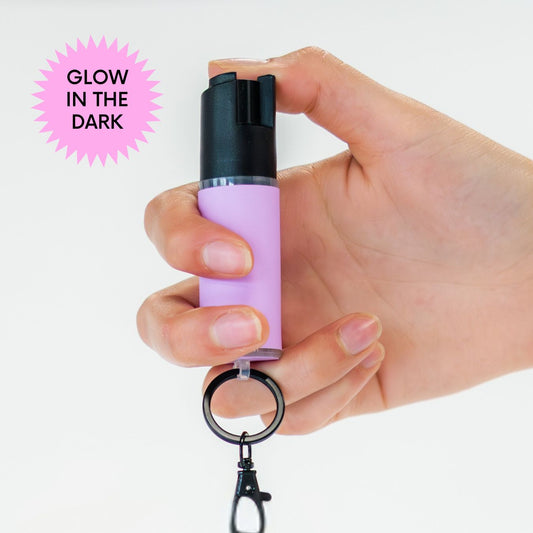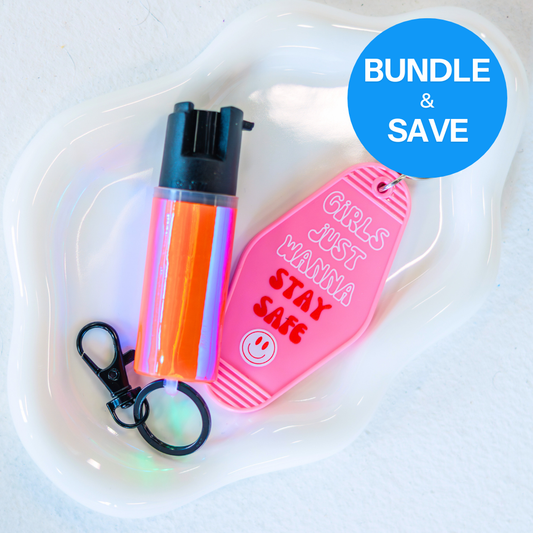Whether you’re starting college or just looking to feel more prepared, having a safety plan is one of the smartest things you can do. It’s like having a cheat sheet for what to do if something unexpected happens.
Don’t worry—it’s not as complicated as it sounds. Let’s break it down into easy steps so you can create a safety plan that works for you!
Step 1: Identify Your Key Contacts
First things first, know who you can rely on in an emergency. Start by taking note of these three things.
- Emergency Numbers: Save important contacts in your phone, like 911, campus security, and local police. It’s a good idea to have these written down somewhere, too—just in case your phone dies.
- Trusted Friends or Family: Pick a few people you trust to be your emergency contacts. Make sure they know they’re on your list and keep them updated if your plans change.
- On-Campus Resources: Know where to find help on campus, like the health center, counseling services, or the Title IX office. Keep their contact info handy.
Step 2: Know Your Safe Spaces
Think about the places where you feel safest and the ones you can quickly get to if you need to.
On-Campus Locations
Identify safe spots like the library, student union, or any 24/7 building. Knowing where these places are can be a game changer if you ever need to get out of a sticky situation.
Off-Campus Options
If you live off-campus, figure out where you’d go if you needed to leave home quickly, like a friend’s apartment or a public place that’s open late.
Emergency Exits
When you’re in a new building, take a second to note the nearest exits. It’s one of those things you hope you never need, but it’s good to know.
Step 3: Plan Your Routes
Getting from point A to point B safely is key.
Daytime vs. Nighttime Routes
Your safest route during the day might not be the safest at night. Choose well-lit, busy paths when walking after dark.
Backup Options
Have a backup route in mind in case your usual path is blocked or feels unsafe. This applies whether you’re walking, biking, or driving.
Transportation Tips
Use campus shuttles, Safe Rides, or ride-sharing apps if you’re out late. Always make sure someone knows when you’re on the move.
Step 4: Prepare for Different Scenarios
A good safety plan covers all sorts of situations, from minor annoyances to more serious emergencies.
Considering the following examples can help you feel more prepared.
- Lost Phone or Wallet: Keep a list of important info somewhere safe, like emergency contacts, your student ID number, and any key passwords.
- If You’re Being Followed: Head to a crowded area or your nearest safe space. You can also call a friend and let them know where you are so they can help if needed.
- Medical Emergencies: Know where the nearest hospital or urgent care center is, and have a basic first aid kit handy in your room or bag.
- Natural Disasters or Lockdowns: Familiarize yourself with your campus’s emergency procedures and know where to go for shelter or lockdown situations.
Step 5: Gather Your Safety Tools
It’s always a good idea to have a few tools ready in case you need them.
- Personal Alarm or Whistle: These small, inexpensive gadgets can help you get attention fast.
- Pepper Spray: If your campus allows it, carrying pepper spray can give you added peace of mind.
- Portable Charger: Keep a fully charged portable charger with you so your phone doesn’t die when you need it most.
- Apps: Download safety apps that let you quickly share your location or send alerts to trusted contacts.
If you’re looking to have multiple tools in one handheld device, check out the Safely Sidekick—packed with a pepper spray, flashlight, alarm, and more.
Step 6: Share Your Safety Plan
A safety plan is most effective when people know about it.
Tell Your Trusted Contacts
Share your plan with the people closest to you so they know what to do if something happens.
Set Up Check-Ins
Establish regular check-ins with a friend or family member, especially if you’re out late or traveling alone.
Practice Your Plan
Run through different scenarios with your friends or roommates. It might feel a little silly, but practicing can help everyone react more confidently if something goes wrong.
Step 7: Stay Flexible and Adjust as Needed
Life changes, and so should your safety plan.
Review Regularly
Check in with your safety plan every few months to make sure it still makes sense. Update it if your schedule, living situation, or social circle changes.
Stay Informed
Stay on top of campus alerts, local news, and any changes to safety resources on campus.
Trust Your Gut
Your instincts are powerful. If something doesn’t feel right, don’t hesitate to change your plan on the spot.
Final Thoughts
Creating a safety plan doesn’t have to be stressful. It’s all about being prepared, so you can enjoy life with more peace of mind.
Take some time to work through these steps, and you’ll be ready for whatever comes your way.






